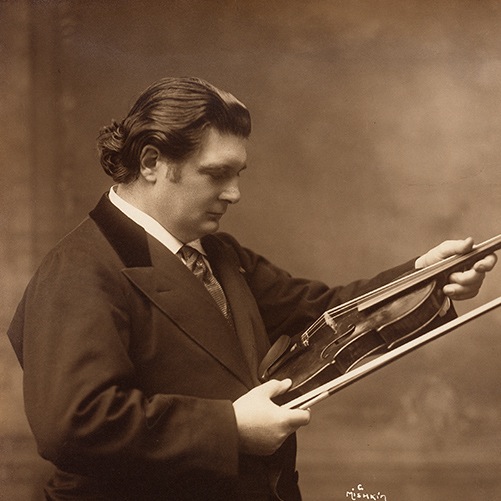Ysaÿe: bridging eras
This post originally appeared on the ‘fiddlefish.com’ blog. It’s here for archival purposes only.
Besides craving fine violins and being persnickety of new ones, I like to train and perform as much I can. One of my obsessions in this tranche of the violin world, is studying the three “bibles” of violin literature: one of which is Eugène Ysaÿe’s six sonatas for solo violin, opus 27. More-so than Paganini’s opus one, I find this book of sonatas to exhibit the essence of violin playing. While exploring it, I have been fortunate to have bumped into some Ysaÿe fanatics who have been investigating this master opus for a good many years now. One of these trail-blazers is Ray Iwazumi. Ray has a wonderfully tenacious doctoral dissertation on the sonatas — and all things Eugène Ysaÿe for that matter — and last weekend, Ray lectured at the Starling-DeLay symposium on the second and the fifth sonatas in some detail.

I had considered myself at least a bit knowledgeable on this musical dossier, but after Ray’s talks and performances it is highly evident that there are many layers of these works to which I am blind. I didn’t want to disclose too many particulars regarding Ray’s analysis, here, but I did want to share some of the excitement Ray rekindled in me regarding Eugène Ysaÿe the player. Just as Beethoven linked two musical eras compositionally, Eugène “bridged” the old and new world of violin-playing. He was a pioneer and innovator. His enormous musical generosity and courage to push a new sound won him the respect of monster players of his time including Carl Flesch, Leopold Aurer, Mischa Elman, Fritz Kreisler, Jaques Thibaud — to name a handful. These masters in their own right are quoted in biographies and interviews lauding Ysaÿe as the ultimate hero of violin; anointing him “True Master” of all-time. Ysaÿe the player continues to inspire one century later.
Ysaÿe the composer came into popularity slowly. Ray suggested it was fundamentally David Oistrakh who would go on and push the six sonatas on the public, which certainly has finally taken hold, at least for opus 27. But there are many of Ysaÿe’s concerti lost in time and many of his other gems are just not played much. My personal favorite work is Ysaÿe’s sonata for two violins. I have yet to hear this on a recital and it’s hard to find other violinists who even know it exists let alone share my enthusiasm for it. So it could be said, perhaps, that Ysaÿe the composer, still, has yet to bloom. Ysaÿe was also a bit of an musical inventor. Not unlike Paganini and his left-hand pizzicato, or Bartók’s violent contribution for the same musical device, Ysaÿe gave violinists some novel things such as the hyper-chord, the hyper-arpeggio, and some very powerful bow directions which he sprinkled though-out all of his sonatas.
Few players come to mind that fundamentally revolutionized violin-playing. Paganini; absolutely. Paganini was probably the most important pioneer for not only violin, but for music to come. But for style and sound, it’s historically rare to have an artist cast the future of playing in their guise. Imagine a century of players all trying to look and sound like Kreisler. That would be a wonderful thing, but it never happened. Or to take a modern example, Anne-Sophie Mutter. I just can’t see it happening. Eugène Ysaÿe was a titan and his compositions are a great place to explore just how important a musician he truly was.